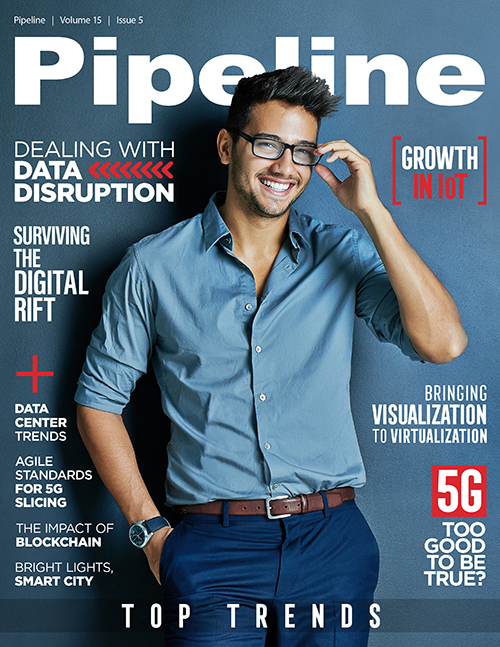Dealing with Data Disruption
Harnessing the latest technology is a large part of the equation, but another key component is the back-end technology that can be used to automate and provide a better customer experience, while also allowing the human element to shine. Integral to both parts is data. Data is at the heart of innovation, disruption, and transformation. Data is derived from the new technology—such as new networks, devices and systems—and leveraged by back-end systems which can automate the processes for efficiencies while leveraging the data in new ways to create innovative new offerings based on contextual information.
It’s this unique balance of new front-end technologies (such as networks, devices and systems), rich data sets, back-end technologies (such as automation, machine learning, and artificial intelligence), and human innovation based on a culture of disruption that opens the door to enormous opportunities and transforms companies into true disruptors. And it’s here where many of the aforementioned companies are failing. They possess an abundance of human resources, network technologies, systems, features, functions, and even content, but they are failing to establish a disruptive mission and a pervasive culture of innovation, and they lack the automation to make growth possible and sustainable.
AI, Machine Learning, and the Automation Imperative
Companies in the earlier examples, such as Uber, would not have succeeded if they allowed manual processes to permeate their customers’ experience or back-end operational process. Uber quickly loses its luster if you still have to call a dispatcher or pay in car. Profitability and scalability also quickly erode if Uber had to manage dispatch staff or provide radios or credit card terminals to their drivers. The same concept applies to new innovations. To be truly disruptive, manual process must be removed from both the customer experience and back-end operational processes. The role of the system then transforms into one that focuses on removing operational issues from the human role and presenting more relevant data to the human; and the human role becomes one of making better decisions faster based on better information and a mission to innovate.
Recently, I had the opportunity to interview Rhett Williams, president of EMEA for gen-E technologies, on the topic of automation and the application of machine learning and artificial intelligence (AI) to today’s operating environment.
“The most brilliant mind untethered from contextual knowledge is just a really smart idiot,” says Williams. “You have to have both in order to harness technology and unlock the value of innovation.”
But to do that, we must define the difference between machine learning and AI, and how each can be applied. gen-E defines machine learning as a method to distill human knowledge (for example, how to handle a fault) to create algorithms that can take similar action based on similar circumstances, in order to allow the human role to focus on other things such as innovation. AI, on the other hand, can ingest data and make both autonomous decisions and recommendations for innovation based on an understanding of the information in context. In product terms, gen-E’s OpCenter collects data which then can be analyzed using machine learning in OpCenter Analyze; or the data can be compressed and moved using OpCenter Transport to OpCenter Decide, which is a cloud-based AI for decisioning and recommendations. This approach enables gen-E’s customers to focus on new innovations, whether identified by a human worker, or AI.
“You don’t want to put a plow on a race horse,” adds Williams. “Machine learning can be applied for many traditional use cases, while AI can be used where there is a need for more complex, contextual and even super human comprehension.”
William goes on to explain that resource utilization is the key differentiator for those enterprises that succeed. And resource utilization can encompass devices, network elements, people, or cash.
“There are very few, if any, people who can hold hundreds of thousands of network elements and all the various performance parameters, workflows and data paths around them in their minds, while keeping up-to-date with the changes that are taking place in real-time,” Williams states. “By leveraging AI, we are able create a holistic view and understanding of the totality of our customers’ resources and their performance. Then we can optimize the entire network.”
Understanding the Past, Surviving the Present, and
Thriving into the Future
We’ve been talking about AI since the 1950s. But the reality today is that AI has become a viable technology when applied appropriately, and the use cases are growing beyond the simple chatbot. Companies like gen-E are leveraging AI, machine learning, and automation in new ways to enable human workers to focus on what they do best: create. And AI can do a lot: it can understand, translate, recognize and compute. You can tell an AI to find something beautiful and it can; but you can’t tell it to create something beautiful and it will. For the time being, that remains up to us.


















